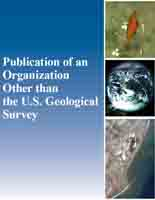Larval Lake Whitefish (Coregonus clupeaformis) zooplankton consumption remains constant despite variation in prey densities in western Lake Erie
Links
- More information: Publisher Index Page (via DOI)
- Download citation as: RIS | Dublin Core
Abstract
Larval fish growth and survival could be limited or reduced due to patchiness of zooplankton densities, even in productive aquatic systems. Recent declines in Lake Whitefish (Coregonus clupeaformis) populations prompted research to identify underlying mechanisms controlling survival at early life stages. In Lake Erie, the bottleneck window controlling year-class strength of Lake Whitefish likely occurs during the first growing season, suggesting that availability of important prey could influence year-class strength. Therefore, spatial and temporal larval Lake Whitefish distribution, diet, and prey utilization were evaluated in western Lake Erie. The pelagic Lake Whitefish larval period in the western basin extends from April 1 to May 15 with most larvae concentrated nearshore at the surface both day and night. Cyclopoid copepods were the most important prey item; however, calanoid copepods and Cladocera were consistently consumed, indicating that copepods and Cladocera were important larval Lake Whitefish prey items. Copepod and Cladocera biomass were the highest nearshore, overlapping with the highest larval Lake Whitefish densities. However, the amount of food consumed by larvae was consistent in all areas, suggesting that offshore areas in western Lake Erie with relatively low zooplankton biomass harbor enough food to satiate larval Lake Whitefish. Therefore, it is unlikely that prey availability limits survival through means of starvation during the larval phase.
Study Area
| Publication type | Article |
|---|---|
| Publication Subtype | Journal Article |
| Title | Larval Lake Whitefish (Coregonus clupeaformis) zooplankton consumption remains constant despite variation in prey densities in western Lake Erie |
| Series title | Aquatic Ecosystem Health and Management |
| DOI | 10.14321/aehm.027.01.85 |
| Volume | 27 |
| Issue | 1 |
| Publication Date | January 01, 2024 |
| Year Published | 2024 |
| Language | English |
| Publisher | Michigan State University Press |
| Contributing office(s) | Great Lakes Science Center |
| Description | 13 p. |
| First page | 85 |
| Last page | 97 |
| Country | Canada, United States |
| Other Geospatial | western Lake Erie |


